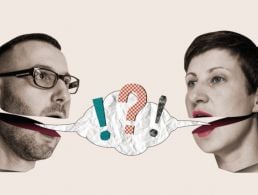Creating, making and inventing could be the key to even out the gender imbalance in STEM (science, technology, engineering and maths), a recent report from chip giant Intel suggests.
The report reveals that girls and women involved in making, designing and creating things with electronic tools may build stronger interest and skills in computer science and engineering, which could potentially reduce the growing gender gap in these fields.
Intel’s report, MakeHers: Engaging Girls and Women in Technology through Making, Creating and Inventing, explores how maker activities can serve as a gateway to computer science and engineering for girls and women, and it identifies ways to better engage girls and women in making in order to increase female representation in these fields.
“With its groundbreaking new report, Intel is demonstrating how the maker movement has helped turn a generation of tech-savvy girls nearly all of whom grew up in the digital age into the leaders and entrepreneurs of the economy of tomorrow,” said Anna Maria Chavez, CEO of the Girl Scouts of the USA.
Female and male makers face similar challenges to making, such as lack of money, information and access to tools and materials. However, female makers experience additional challenges: 1 in 3 female makers say lack of mentorship is a challenge, 1 in 6 have been excluded from making because of their gender, 1 in 6 face cultural biases about the appropriateness of women in making, and 1 in 14 don’t feel safe going to the places where maker activities are held.

Women Invent Tomorrow is Silicon Republic’s campaign to champion the role of women in science, technology, engineering and maths. It has been running since March 2013, and is kindly supported by Accenture Ireland, Intel, the Irish Research Council, ESB, Twitter, CoderDojo and Science Foundation Ireland
Female scientist image via Shutterstock




